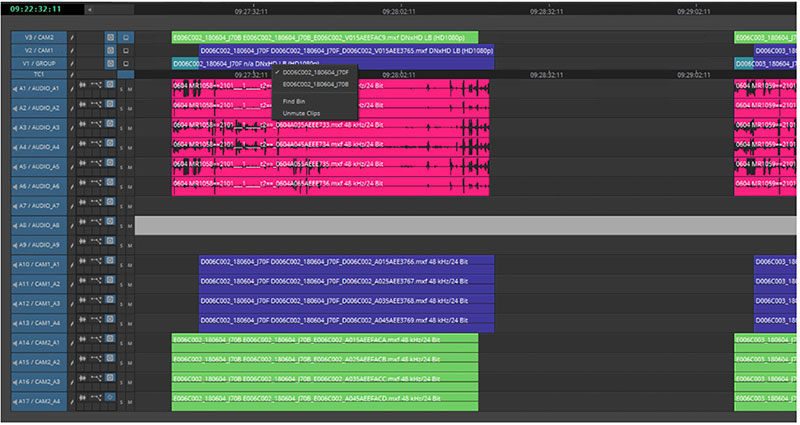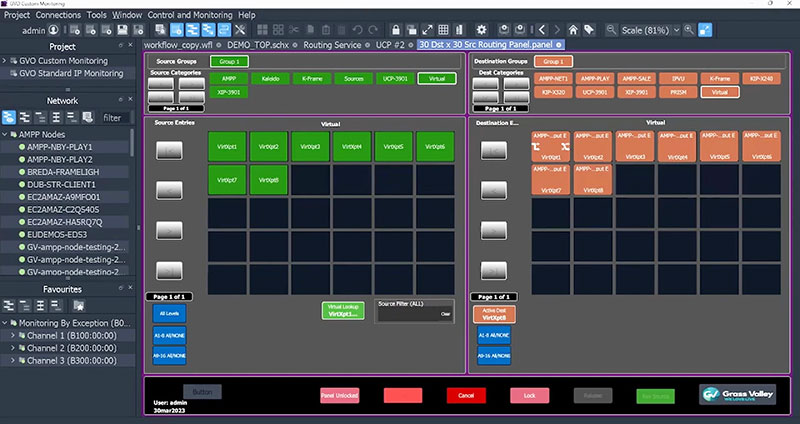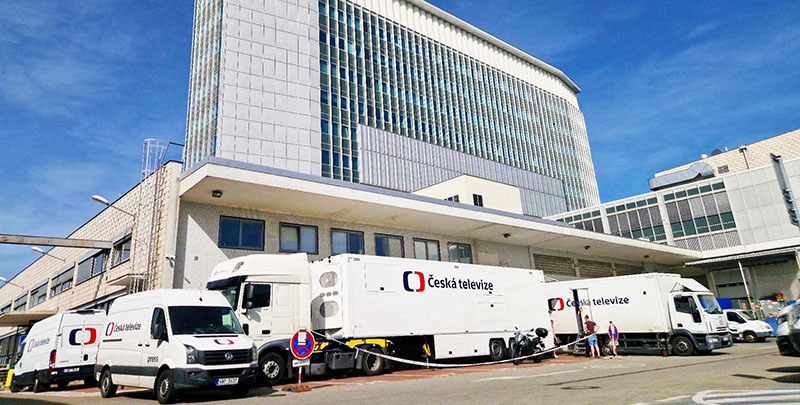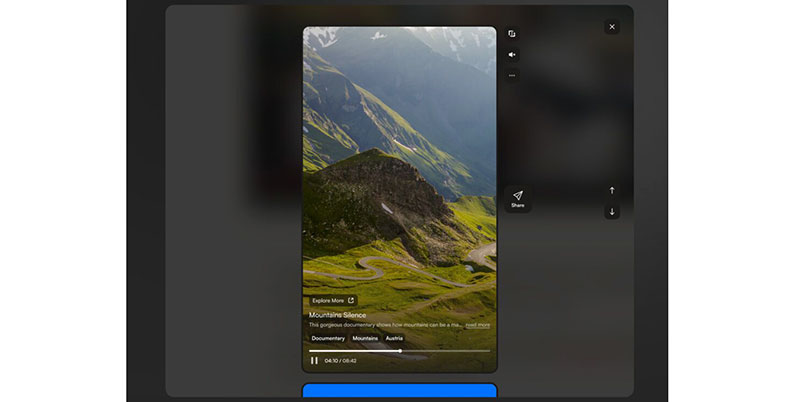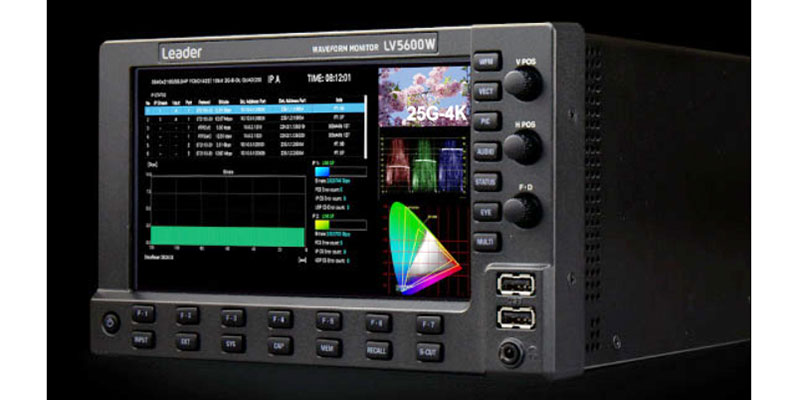PBS and Ateme collaborated on an ideal system to replace the network’s satellite distribution, while optimising costs, supporting digital platforms and preparing for future services.
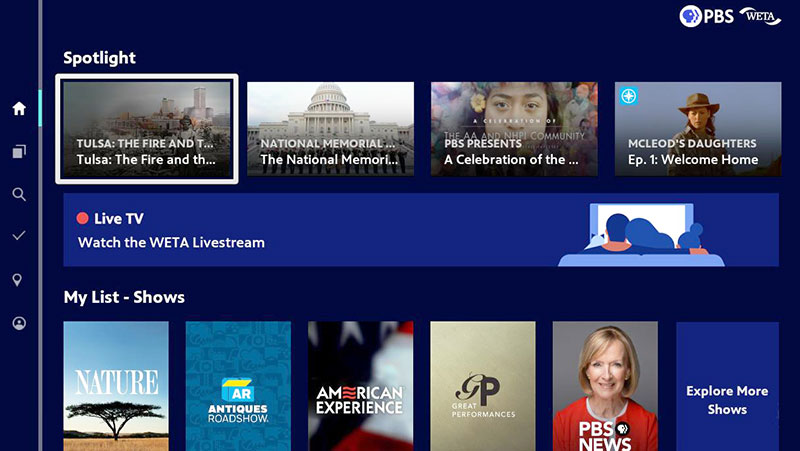
PBS is one of the best known public broadcast networks in the US. Updating the PBS technical infrastructure to meet the demands of an industry now committed to digital distribution was a vital initiative to ensure the long-term vitality of this important source of educational, factual and cultural programming.
PBS has a huge IP network in place connecting over 170 member stations. This network supports the sharing and distribution of non-linear file assets between stations. The MPLS (Multiprotocol Label Switching) circuits are supplied by a major connectivity partner, while the technology platform for the system is run by a specialised provider who keeps their applications running, and handles extensions and upgrades to application software.
MPLS networking routes traffic using the shortest path approach, but uses labels instead of network addresses to navigate data packets over private WANs. Scalable and protocol-independent, MPLS assigns labels to each packet to control its path, improving traffic speed and avoiding downtime for users connected to the network.
Transitioning from Satellite
The primary objective for this project was to expand the system enough to support the network’s migration from satellite – they needed to prepare for the end of service of SES AMC-21, an American communications satellite that had been planned to operate until 2023 and now needed to wind its operations down. This transition was to move the task of content delivery between distributors and public TV sites, over to a terrestrial system.
Furthermore, the project aimed to optimise delivery costs and pave the way for potential new services in the future. Each station would receive five or more network feeds for integration into local ATSC 1.0 and ATSC 3.0/NextGen TV broadcasts.
PBS had the option to expand the bandwidth on all circuits to support future applications. Each station could also encode two HD streams. The primary channel would be fed to YouTube TV, Hulu and other vMVPDs (Virtual Multichannel Video Programming Distributors). The second HD stream can either serve as an alternate stream fed to the vMVPDs, or be used to distribute live event content to other PBS member stations, nation-wide or regionally.
New World of Digital Platforms
Ensuring distribution on new digital platforms is critical to PBS’ vitality. vMVPDs stream packages of multiple live television channels to subscribers over the internet, normally without the on-demand options that SVOD services have.

Although a satellite life-line service would be maintained, space segment costs would be reduced by approximately 50% by dropping from two transponders to one, needed only for backup or primary purposes. In a satellite environment, the space segment involves the satellites themselves and their uplinks and downlinks, as opposed to the user’s segment, or the control segment on the ground. PBS’ chosen vendor needed to be able to install a system that would automatically default to the satellite life-line service in the case of signal loss from the MPLS circuit.
Other criteria that were important to PBS included global monitoring and control, low-latency encoding with very high picture quality, and a fully redundant system for high reliability. PBS was also looking for the agility of a flexible license model with multi-CODEC support. Ateme’s TITAN Edge, combined with the Ateme PILOT Manager orchestration service, was able to deliver on these criteria, and became the right platform for this project.
Reliable Transport
TITAN Edge is flexible, dense Integrated Receiver Decoder (IRD) software for use on COTS servers with a hardened Linux OS, with capabilities such as encoding, decoding and gateway functions. It decodes multiple formats including MPEG-2, H.264, HEVC, J2k and JPEG-XS as well as audio codecs, supporting SD, HD, Full HD and UHD resolutions in order to preserve viewing quality following decompression. It also introduces new features and enhancements over time, including frame rate conversion, HDR support and so on, which are enabled through software upgrades.
TITAN integrates directly into modern IP-based workflows and is compatible with network protocols like RTP, UDP, RTMP and HLS, plus ARQ approaches for reliable transport such as Zixi, SRT and RIST. Also, with support for emerging standards like JPEG-XS and SMPTE-2110, TITAN helps ensure the system’s compatibility into the near future.
Primary and back-up servers can deliver genlocked (synchronised) streams that replace traditional satellite transmissions while also encoding dual HD streams. Nevertheless, a satellite receiver module can be added to tune the life-line satellite’s L-Band signal and automatically default to the appropriate satellite stream if the MPLS circuit has a failure, or reverse the process if the PBS affiliate has chosen the satellite as the primary feed.
The encoded streams are low-latency with high-quality AVC encoding. The Ateme license model supports a future migration to a more advanced codec such as HEVC.
Monitoring and Redundancy
TITAN’s integration with Ateme’s Pilot Manager added orchestration and configuration features for varied use cases. A cloud-native management system for overseeing Ateme set-ups, it runs in the AWS Cloud and connects via the MPLS circuit to all devices. Content and service providers like PBS can monitor and control their processing platforms in real-time, 24/7/365, as required and at scale.
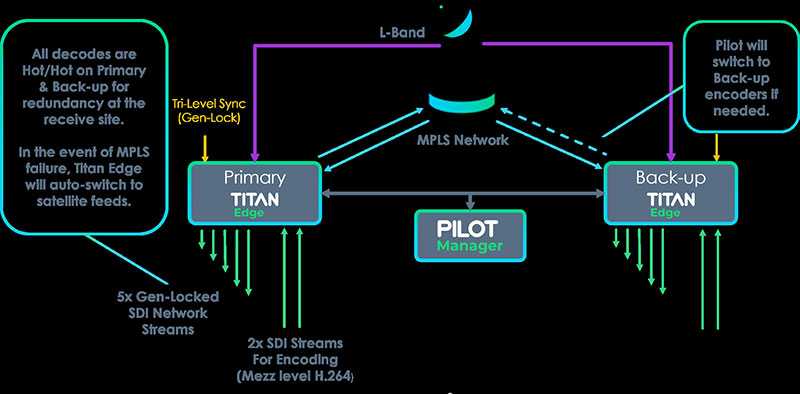
System architecture at each of the 170+ PBS member stations
Equipped with industry standard APIs, PILOT Manager supports automatic failure recovery to minimise service disruptions, and can be used to automate changes to service delivery such as customisation and monetisation. It maintains high availability through its content-adaptive encoding.
When Ateme was chosen as the platform for PBS’ transitiion, the company’s service and support organisation also weighed into the selection process, along with their demonstrated ability to work cooperatively with other vendors in the ecosystem.
From Satellite to IP – Lessons Learned
The PBS project has been a success. According to Ateme, many lessons have been learned throughout the course of the project. This knowledge will be valuable to other networks that want to migrate away from satellite to IP-based distribution.
The main conclusions drawn include the importance of addressing latency differences between delivery methods, adopting a phased migration approach to allow time for overcoming unforeseen challenges, and ensuring the technology is equipped to handle the inherent packet loss and jitter in IP networks.
As C-Band satellite space grows harder to procure and other paths such as Ku-band have inherent issues such as rain fade and sun outages, IP delivery becomes a more workable alternative. Ateme now aims to improve its capabilities to work with providers and channel partners to architect solutions to meet this growing need. www.ateme.com




